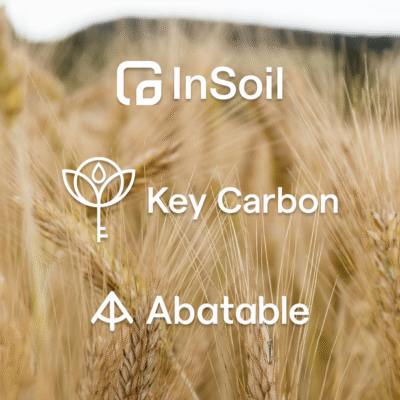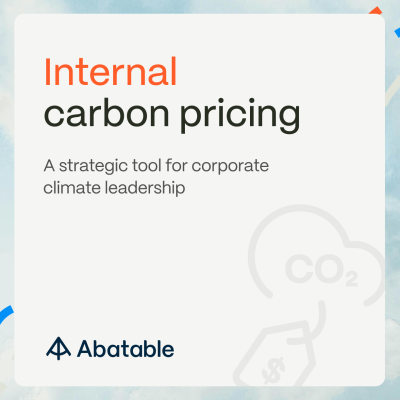Whether you manage an international business, a complex financial portfolio, or simply your personal affairs as a citizen, decarbonising your activities requires understanding a number of important terminologies. Although the differences may seem subtle at first, this language is highly specific, and indicates very different outcomes in relation to impact on climate change. Indeed, it is within these differences that the battle for a stable planet will be won, or lost.
In this article, we will analyse three of the core terms in climate language: net zero, carbon neutral, and climate positive.
The pathway towards decarbonisation
To begin, let us calibrate our perspective: rather than looking at these terms in isolation, let’s consider them as phases of a decarbonisation pathway, with each term indicating a step towards the optimal outcome. In this context, the first step is carbon neutrality, then net zero, and finally climate positive. Becoming climate positive is therefore our end goal, with carbon neutrality and net zero as benchmarks towards this goal.
For the purposes of this article, we will begin this journey as a hypothetical European supermarket chain. Our corporate entity has store locations throughout Europe, a global supply chain, and as yet no climate impact agenda. Below we will explore these three terms in relation to our hypothetical business as we transition towards creating a climate positive organisation.
Step one: carbon neutral
Becoming carbon neutral is our company’s first step along the decarbonisation pathway. If we are serious about this objective, and not simply creating a marketing ploy, carbon neutrality means we are entering a phase of intense internal research and assessment.Our first objective is to define the exact size of our company’s carbon footprint. Since our company is a supermarket, we have numerous commercial spaces, a complex global supply chain, and hundreds of global suppliers in agriculture and industry. Although the depth of this analysis is beyond the scope of this article, let’s just say that for our business, this first step will require a steep learning curve. (If you’re interested to dive a little deeper, check out how the 3 scopes of emissions are categorised).
After this process is complete, and we have a clear picture of our company’s carbon footprint, our next step is to limit our carbon emissions where possible, and balance the remainder by paying for carbon credits. Carbon offsets allow our company to fund the reduction of carbon from the atmosphere to compensate for our remaining emissions. Once we have achieved this, our company has become carbon neutral, which we can make official either with government-administered schemes, such as Climate Active in Australia, or if our country doesn’t have a scheme or we operate across borders, expert independent verification.
Step two: net zero
Our next step on the path towards becoming climate positive is to reach for net zero. Having achieved carbon neutrality, where our emissions have been assessed, calculated, limited where possible, and the remainder offset, net zero challenges us not to create any carbon emissions in the first place. Theoretically, this means that no carbon offsets are necessary, because no carbon was generated in our operations.
Reaching net zero is about taking a deep, holistic approach to decarbonisation. It means an organisation committing to scientifically validated targets that align with limiting global warming to 1.5C above pre-industrial levels, and investing beyond its value chain to create a low carbon infrastructure accessible to all players in the industry. Fortunately, the Science Based Targets Initiative (SBTi) offers clear guidelines for reaching net zero. These include making clear commitments, setting targets openly with stakeholders, and making voluntary or mandatory annual climate disclosures to track the organisation’s progress.
As a supermarket chain, achieving net zero will be an impressive feat. It may involve radically transforming our supply chain, electrifying our logistics, investing in solar panels on our store roofs, and switching to renewable energy suppliers to power everything else. We may encourage our employees to bike and use public transportation, and invest in new produce suppliers who, like us, heed the call of decarbonisation and make their own operations net zero. Any remaining emissions will need to be balanced with offsets. If our supermarket is following the SBTi guidelines, this means limiting the use of carbon offsets to compensate for up to 5-10% of our total emissions, and only using carbon removal claims, rather than relying on avoided emission claims.
In our current moment, this ambition would be incredibly challenging for a supermarket chain, with its complex array of suppliers and activities. Estimates show that roughly 25% of the world’s emissions are hard to abate, meaning that reducing our emissions by 95% may not be possible or practical with today’s technologies and constraints; it will take time to reach a credible net zero goal. However, as more suppliers heed the call to net zero, we anticipate these shifts will become easier and more practical in the journey towards becoming climate positive.
For some companies reaching net zero will be almost impossible. This shouldn’t prevent them from instead focusing directly on the end goal, of becoming climate positive.
Step three: climate positive
Reaching zero emissions was an incredible achievement for our organisation. We have invested above and beyond our direct business interests, aligned with SBTi requirements, and are now leading the way for other supermarkets and suppliers to decarbonise their own operations and supply chains. Our customers, inspired by our pioneering climate agenda, are more committed and numerous than ever.
However, the atmosphere is still far off-track from a 1.5C global average temperature rise. Humans have simply emitted too much carbon into the atmosphere for too long. As an increasingly responsible organisation, we have decided to take the next step: becoming climate positive.
Climate positive, also known as carbon negative, means our organisation is actively removing existing carbon from the atmosphere. This can be done in a variety of ways, from investing in additional climate contributions, to supporting suppliers and stocking products that are themselves carbon negative. In our sector of food retail, this might look like investing in farms using regenerative agricultural practices, or in industrial food companies who are themselves climate positive through investing in their own industrial infrastructure.
Conclusion
Although the terms carbon neutral, net zero and climate positive have been around for some time, it is only recently that they have started to become widely adopted and implemented. Therefore, regulatory frameworks that can properly validate and certify these claims have some catching up to do. The SBTi and other reliable private certifications are a positive step in this direction.
There has certainly been some bad press surrounding carbon neutral claims in particular, with various high profile companies being accused of “greenwashing”. However, we believe the terms above should not be perceived negatively, but considered as a work in progress, and a step towards making positive climate contributions. Certainly, this new shared language and its definitions are pivotal for more organisations becoming climate positive in the fight against global warming.
Get in touch if your company is on the path to net zero and can benefit from our carbon sourcing services to build your diversified portfolio of pre-vetted carbon offsets.































































































